Abstract
Thirteen centres in eight countries (Egypt, India, Pakistan, Philippines, Senegal, Sri Lanka, Democratic Yemen and Zambia) participated in the WHO collaborative study to evaluate the home-based maternal record (HBMR). The evaluation showed that use of the HBMR had a favourable impact on utilization of health care services and continuity of the health care of women during their reproductive period. When adapted to local risk conditions, their cut-off points and the available resources, the HBMR succeeded in promoting self-care by mothers and their families and in enhancing the timely identification of at-risk cases that needed referral and special care. The introduction of the HBMR increased the diagnosis and referral of at-risk pregnant women and newborn infants, improved family planning and health education, led to an increase in tetanus toxoid immunization, and provided a means of collecting health information in the community. The HBMR was liked by mothers, community health workers and other health care personnel because, by using it, the mothers became more involved in looking after their own health and that of their babies. Apart from local adaptation of the HBMR, the training and involvement of health personnel (including those at the second and tertiary levels) from the start of the HBMR scheme influenced its success in promoting maternal and child health care. It also improved the collection of community-based data and the linking of referral networks.
Full text
PDF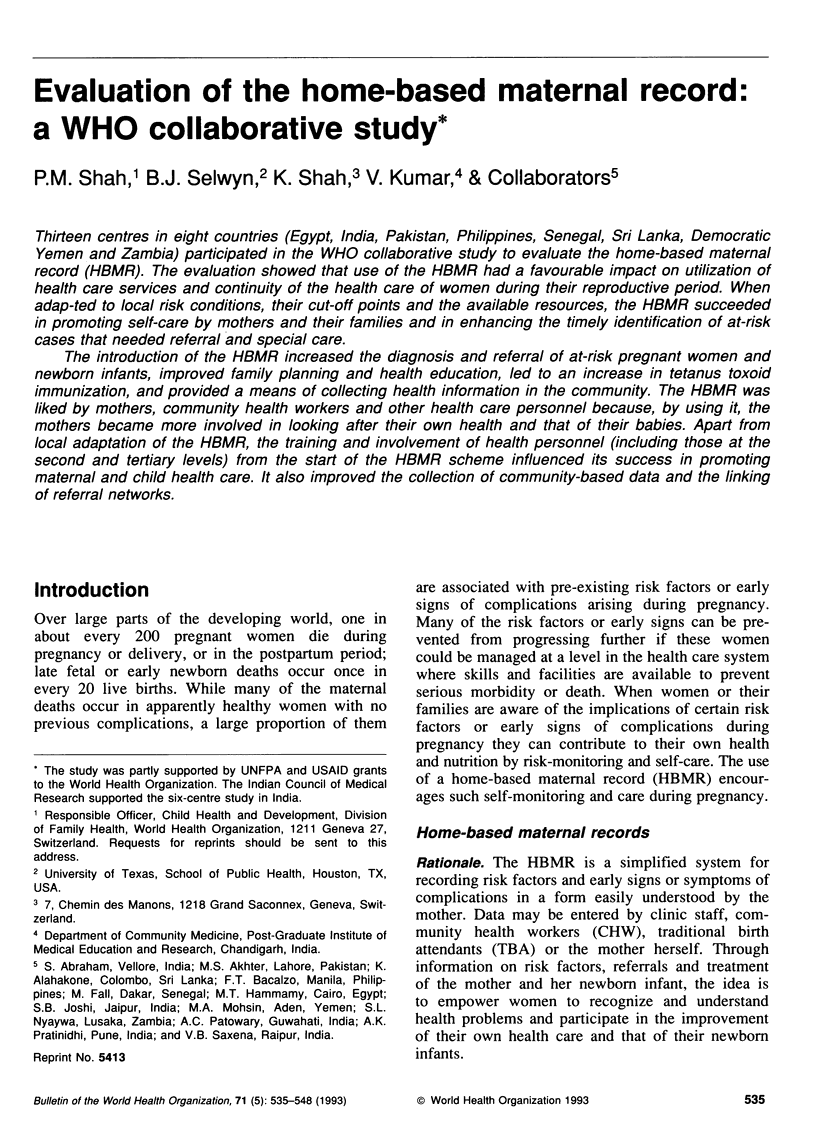

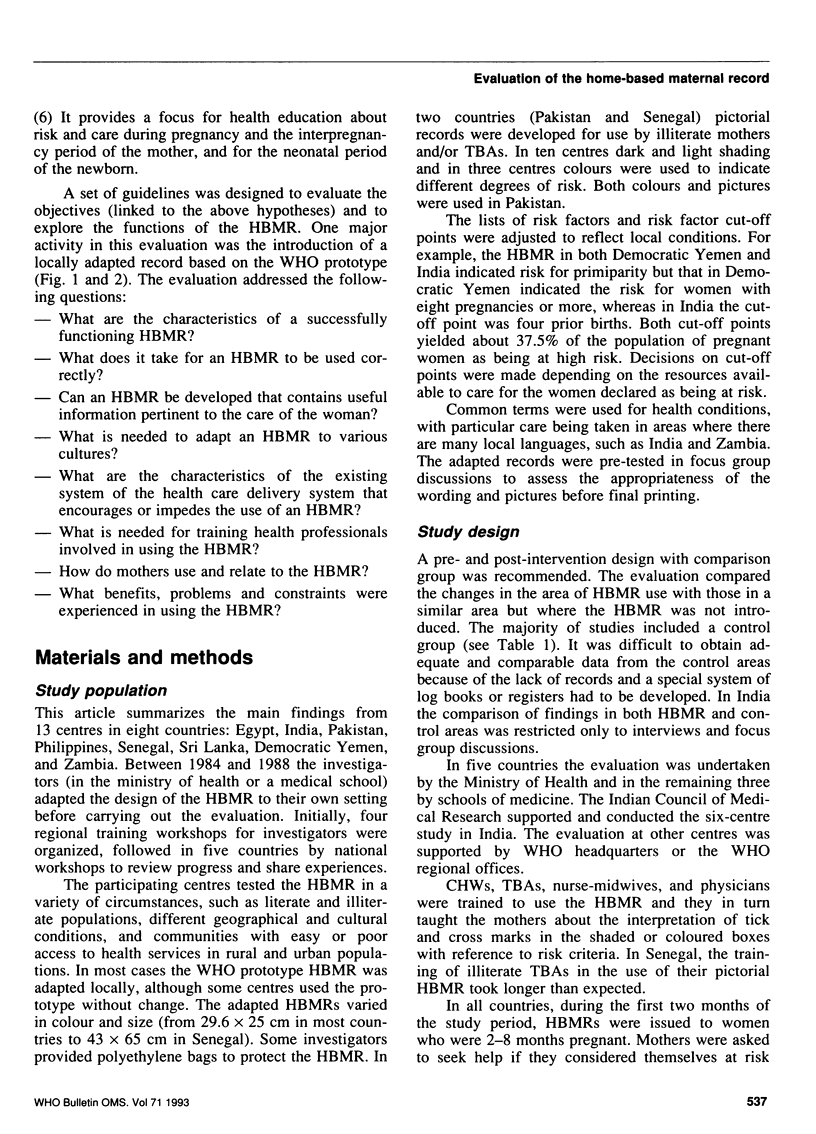

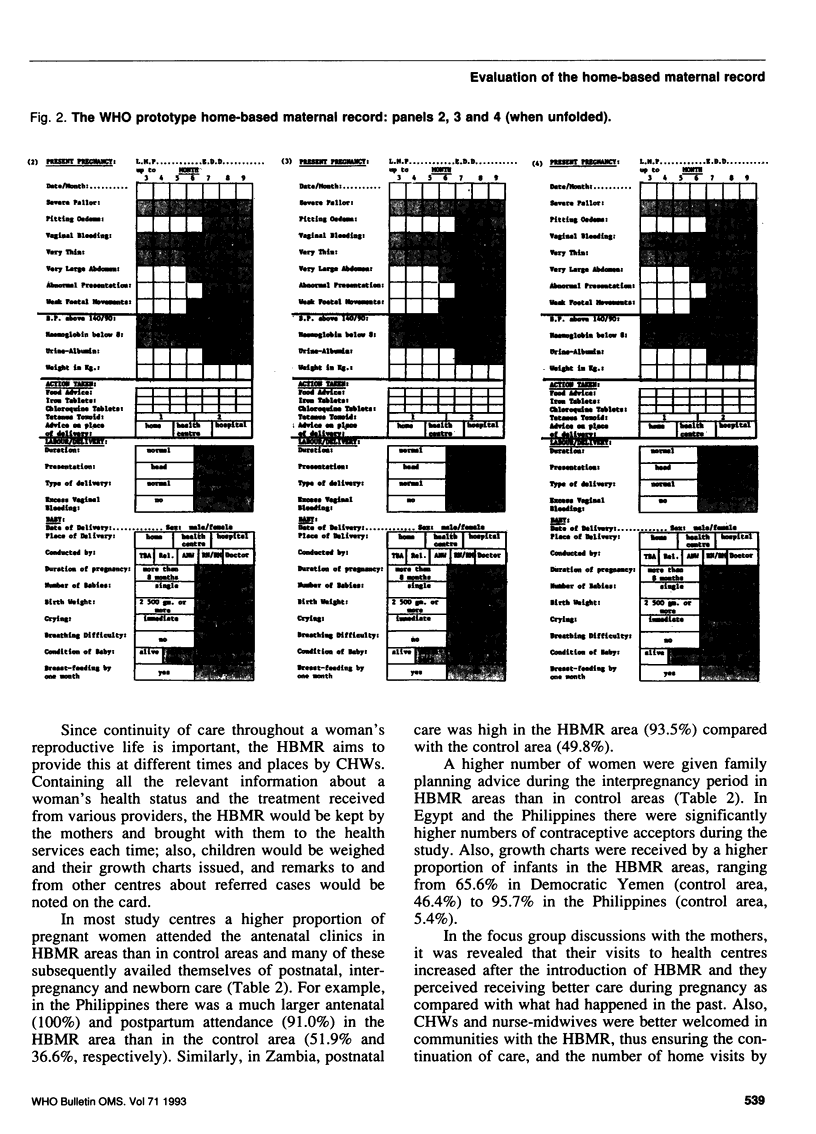
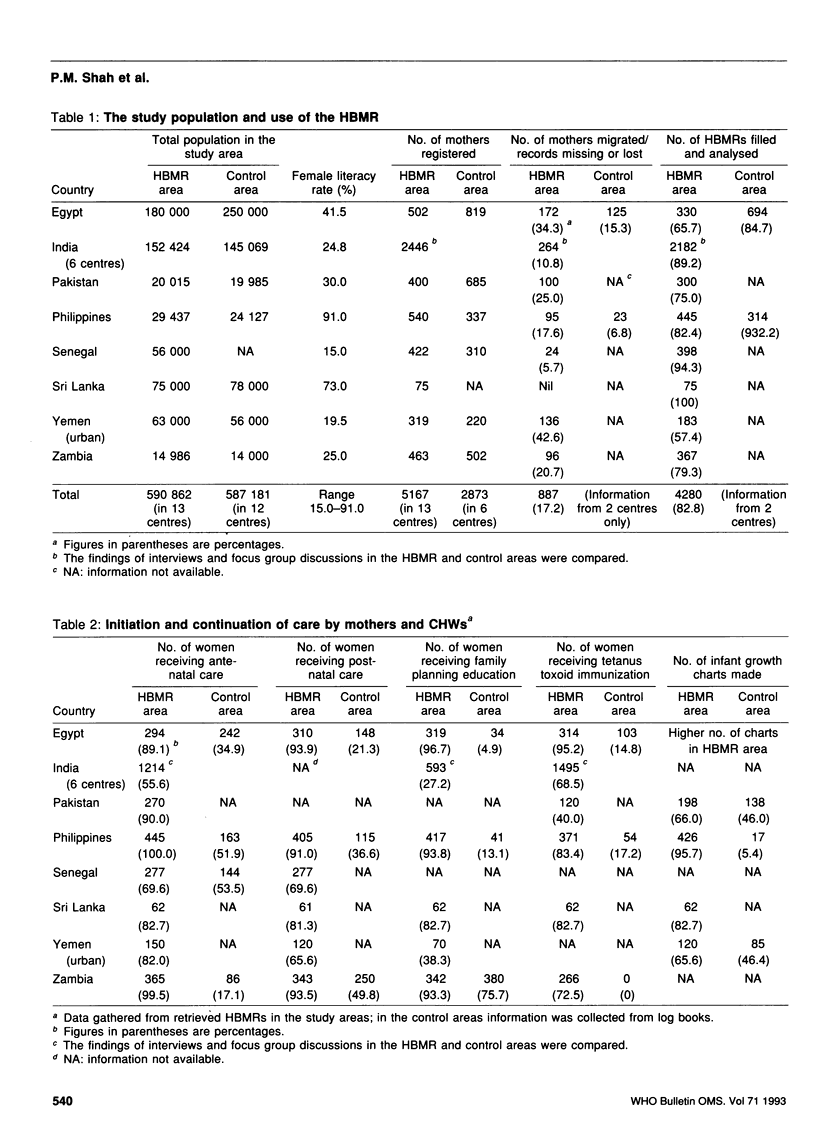


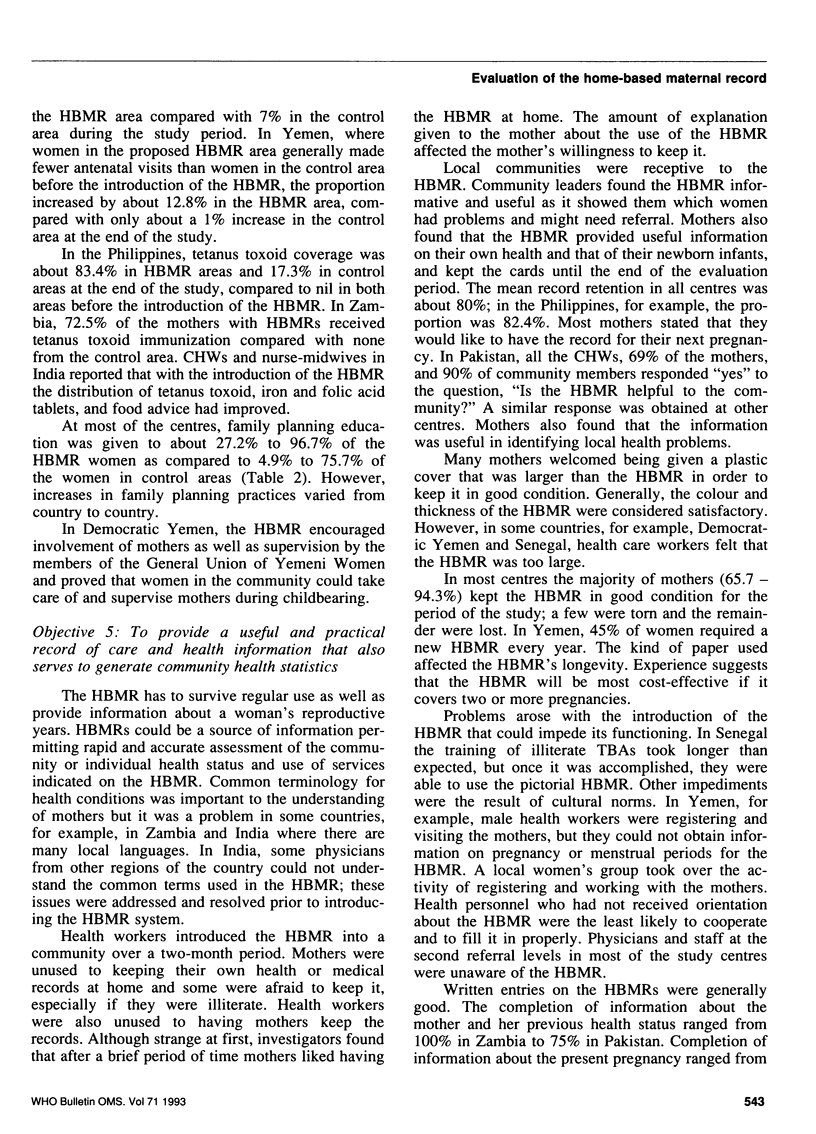
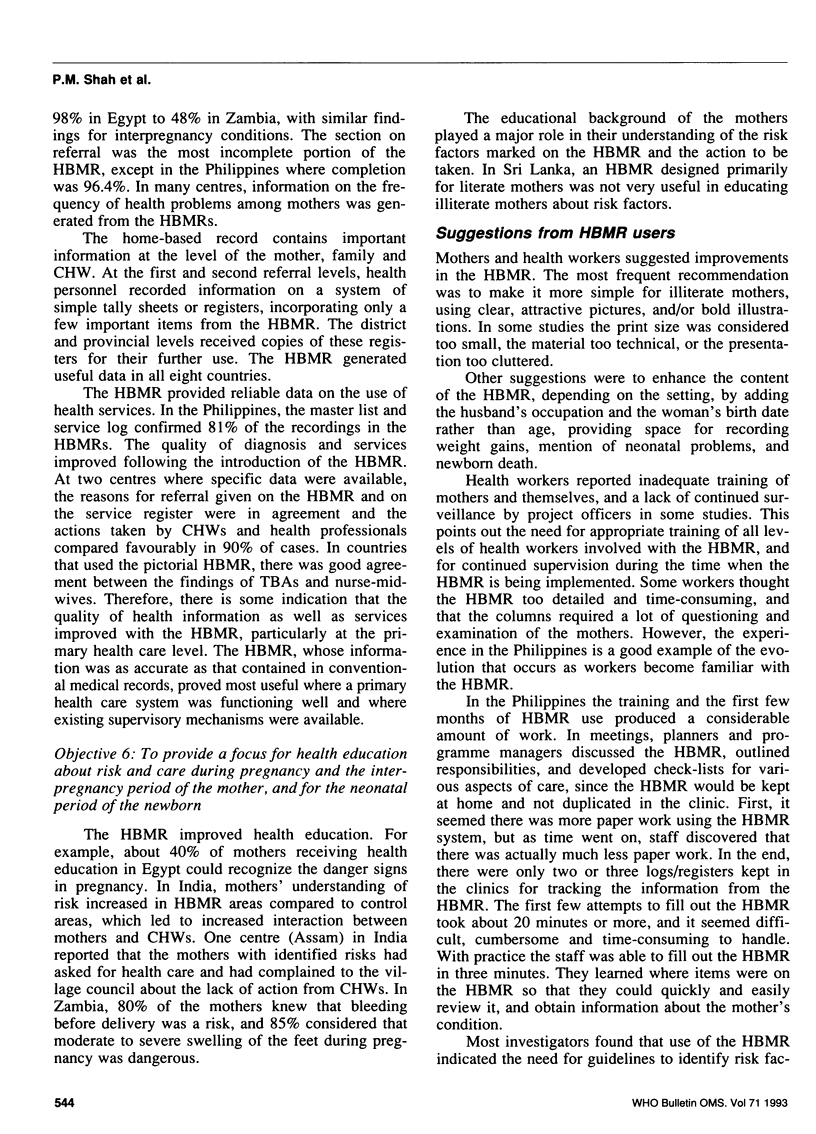
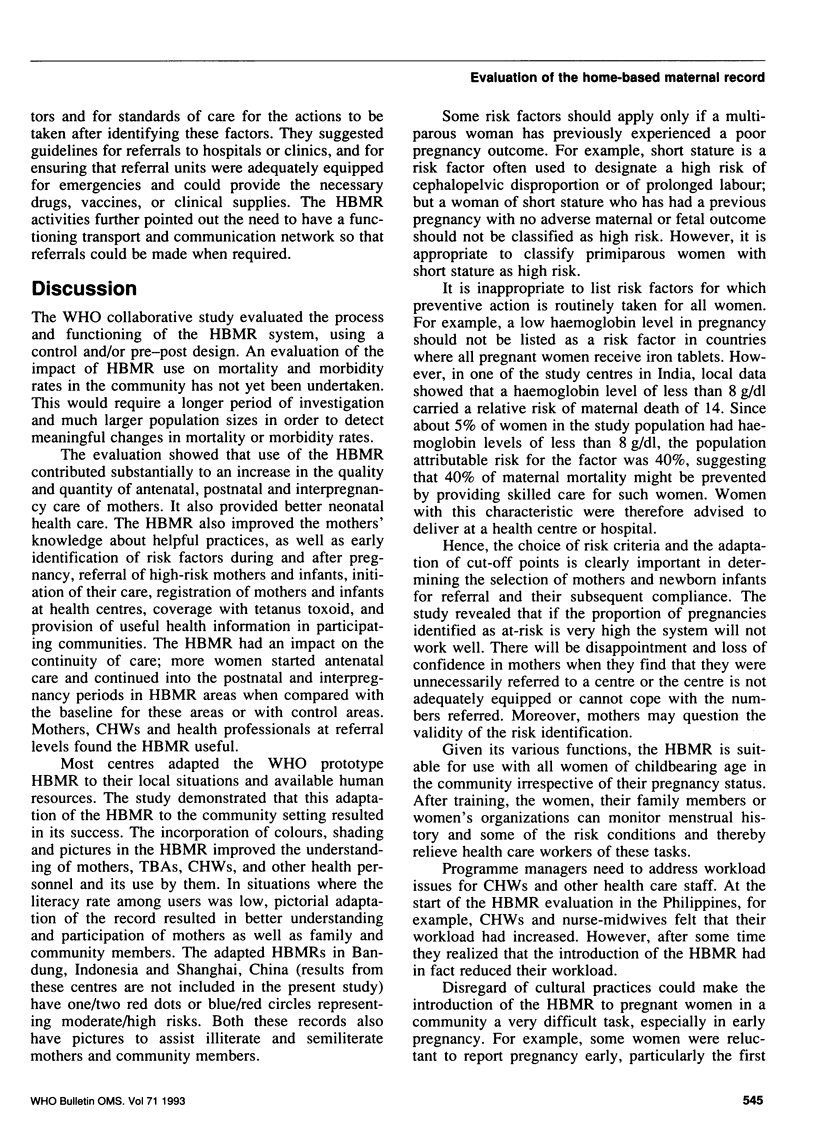
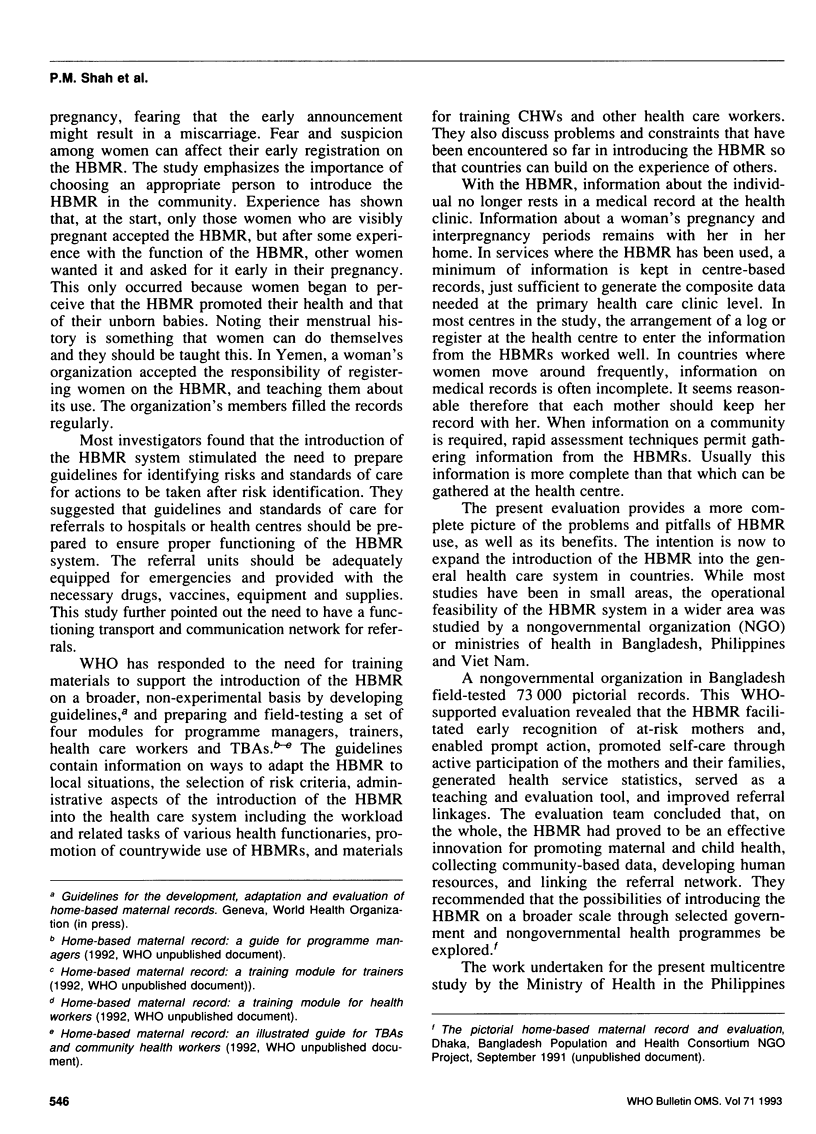

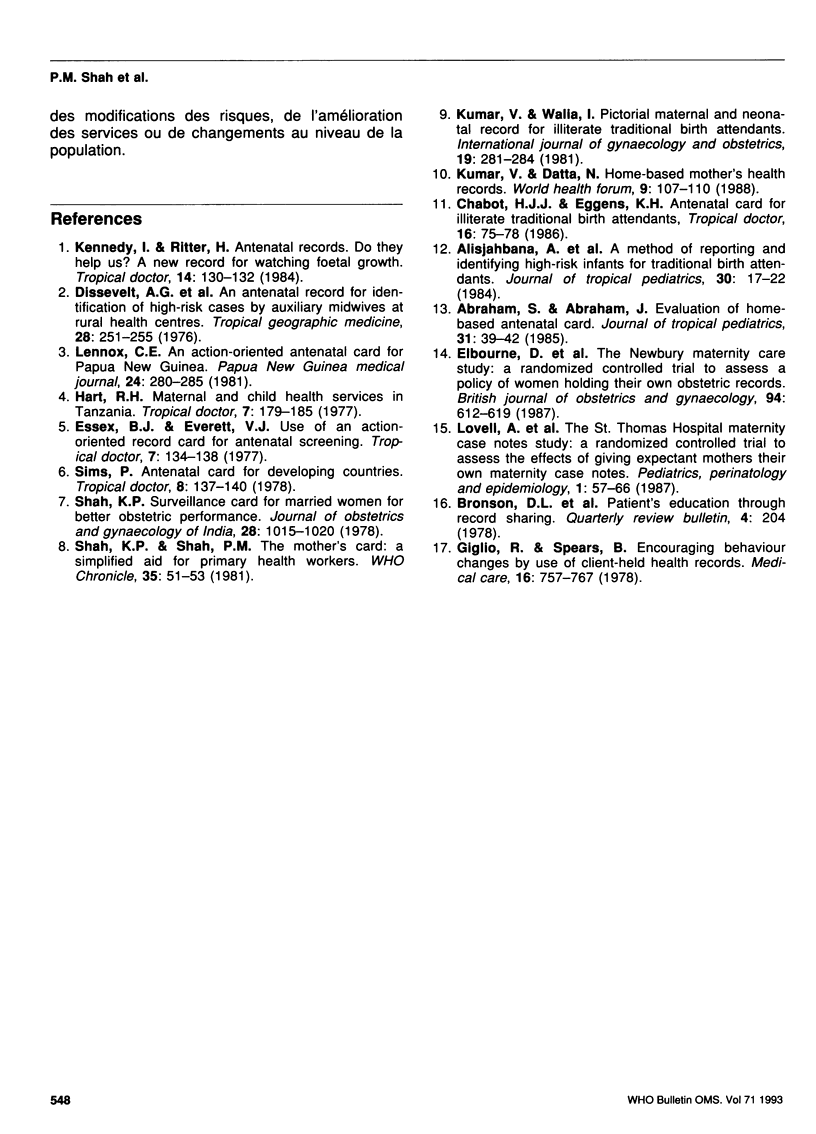
Selected References
These references are in PubMed. This may not be the complete list of references from this article.
- Abraham S., Joseph A. Evaluation of a home based antenatal card. J Trop Pediatr. 1985 Feb;31(1):39–42. doi: 10.1093/tropej/31.1.39. [DOI] [PubMed] [Google Scholar]
- Alisjahbana A., Widjaya J., Sukadi A. A method of reporting and identifying high risk infants for traditional birth attendants. J Trop Pediatr. 1984 Feb;30(1):17–22. doi: 10.1093/tropej/30.1.17. [DOI] [PubMed] [Google Scholar]
- Chabot H. T., Eggens K. H. Antenatal card for illiterate traditional birth attendants. Trop Doct. 1986 Apr;16(2):75–78. doi: 10.1177/004947558601600212. [DOI] [PubMed] [Google Scholar]
- Dissevelt A. G., Kornman J. J., Vogel L. C. An antenatal record for identification of high risk cases by axliliary midwives at rural health centres. Trop Geogr Med. 1976 Sep;28(3):251–255. [PubMed] [Google Scholar]
- Elbourne D., Richardson M., Chalmers I., Waterhouse I., Holt E. The Newbury Maternity Care Study: a randomized controlled trial to assess a policy of women holding their own obstetric records. Br J Obstet Gynaecol. 1987 Jul;94(7):612–619. doi: 10.1111/j.1471-0528.1987.tb03165.x. [DOI] [PubMed] [Google Scholar]
- Essex B. J., Everett V. J. Use of an action-orientated record for antenatal screening. Trop Doct. 1977 Jul;7(3):134–138. doi: 10.1177/004947557700700316. [DOI] [PubMed] [Google Scholar]
- Giglio R., Spears B., Rumpf D., Eddy N. Encouraging behavior changes by use of client-held health records. Med Care. 1978 Sep;16(9):757–764. doi: 10.1097/00005650-197809000-00006. [DOI] [PubMed] [Google Scholar]
- Kennedy I., Ritter H. Antenatal records: do they help us? A new record for watching fetal growth. Trop Doct. 1984 Jul;14(3):130–132. doi: 10.1177/004947558401400310. [DOI] [PubMed] [Google Scholar]
- Kumar V., Datta N. Home-based mothers' health records. World Health Forum. 1988;9(1):107–110. [PubMed] [Google Scholar]
- Kumar V., Walia I. Pictorial maternal and neonatal records for illiterate traditional birth attendants. Int J Gynaecol Obstet. 1981 Aug;19(4):281–284. doi: 10.1016/0020-7292(81)90075-8. [DOI] [PubMed] [Google Scholar]
- Lennox C. E. An action orientated antenatal card for Papua New Guinea. P N G Med J. 1981 Dec;24(4):280–285. [PubMed] [Google Scholar]
- Lovell A., Zander L. I., James C. E., Foot S., Swan A. V., Reynolds A. The St. Thomas's Hospital maternity case notes study: a randomised controlled trial to assess the effects of giving expectant mothers their own maternity case notes. Paediatr Perinat Epidemiol. 1987 Apr;1(1):57–66. doi: 10.1111/j.1365-3016.1987.tb00090.x. [DOI] [PubMed] [Google Scholar]
- Shah K. P., Shah P. M. The mother's card: a simplified aid for primary health workers. WHO Chron. 1981 Feb;35(2):51–53. [PubMed] [Google Scholar]
- Sims P. Ante-natal card for developing countries. Trop Doct. 1978 Jul;8(3):137–140. doi: 10.1177/004947557800800321. [DOI] [PubMed] [Google Scholar]


